A few years back, as the Youth Services department was thinking about programs and play opportunities for the library, I attended this talk about the benefits of nature play for children. Scholarly presentations on the benefits of forest schools, nature preschools, and the importance of nature play were in abundance as well as hands-on activities for practical application in a school or library setting. I love it, and I’m totally on board, but the point that stuck out the most for me was the educator who talked about kids’ play being their work – that they would naturally become builders, engineers, hunters, gatherers. If left to their own devices, they will accomplish amazing things.
I enjoy watching this play out in real time. The Brookfield Zoo has a spot called the Hamill Family Play Zoo, which in pre-pandemic days had an outdoor feature that was just a bunch of raw materials: sticks, logs, rocks, etc . Kids would come and play, and eventually start working together, hauling logs, building structures, generally behaving like little ants. Indeed, my son and his friends have never met a pile of sticks they didn’t like.
Recently, a fellow science enthusiast and I were watching our kids move sticks around the yard in an attempt to build a fort. My friend asked if I had ever heard of a Da Vinci bridge – a self supporting structure that does not require any adhesives or extra equipment. I hadn’t, but it certainly sounded cool! My friend rallied the kids and tried to see if they could make one out of 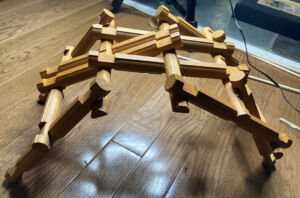 the long poles they were using for their fort. Unfortunately this experiment failed (sticks were too uneven), but the seed was planted, and I had a plan for my next STEAM Engines video.
the long poles they were using for their fort. Unfortunately this experiment failed (sticks were too uneven), but the seed was planted, and I had a plan for my next STEAM Engines video.
I am obviously familiar with the paintings of Leonardo Da Vinci, but what I was not prepared for was his extensive resume! Between painting, drafting, engineering, architecture, sculpture – there was almost nothing he didn’t try. The extent of his curiosity was seemingly boundless. He created blueprints and/or models for flying machines, catapults and submarines, canals and fortresses, even an early robot prototype! He kept copious notes some of which were written (presumably to keep them secret) in mirror script. He was a vegetarian and an animal lover! He was homeschooled! And I didn’t even scratch the sur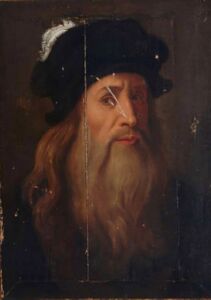 face.
face.
This got me thinking about STEAM/STREAM education: the inextricable link between arts and sciences. Was it Da Vinci’s curious scientific mind that made him take a closer look at the world, the beauty of which then inspired him to make art, which then made him look at the world in a different way, which allowed him to see possibility and innovate, and so on in this arts/sciences virtuous circle. I like thinking about this a lot. My own background is in the arts, and because I was an art kid, I was somehow convinced that I could not be a science kid. I am making up for lost time in adulthood. 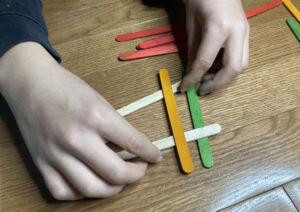
Moving on to our project: Da Vinci designed the self supporting bridge to be lightweight and portable – easy to assemble and take down on the go. We gathered different materials: Popsicle sticks, some squared dowels, and Lincoln Logs. 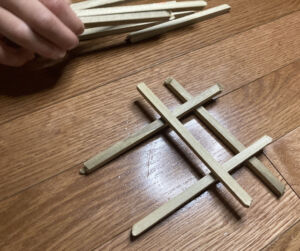 Though a little bit fraught – one wrong move and they all fall down – we had a really fun time working on these bridges. The dowels were a complete bust, in a very literal sense. We tried them smooth first, then tried cutting notches in them, but ultimately we couldn’t get it to assemble. We were able to successfully complete a bridge using the popsicle sticks, but it was hard. Our hypothesis for both of those materials is we might have seen more success if they had been longer. The 8” Lincoln Logs were an amazing success, hampered only by the fact we didn’t have enough! The pre-cut notches made the building process sign
Though a little bit fraught – one wrong move and they all fall down – we had a really fun time working on these bridges. The dowels were a complete bust, in a very literal sense. We tried them smooth first, then tried cutting notches in them, but ultimately we couldn’t get it to assemble. We were able to successfully complete a bridge using the popsicle sticks, but it was hard. Our hypothesis for both of those materials is we might have seen more success if they had been longer. The 8” Lincoln Logs were an amazing success, hampered only by the fact we didn’t have enough! The pre-cut notches made the building process sign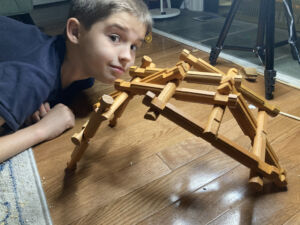 ificantly easier, and contributed greatly to the stability of our structure.
ificantly easier, and contributed greatly to the stability of our structure.
I can’t wait for the return to in-person programming because this lends itself to hands-on activity perfectly. There are so many different iterations to try – different sizes, different weights. It worked nicely for an at-home program. It’s something that can be done with materials found at home by following instructions, but I think it would be very satisfying as a collaborative engineering event.

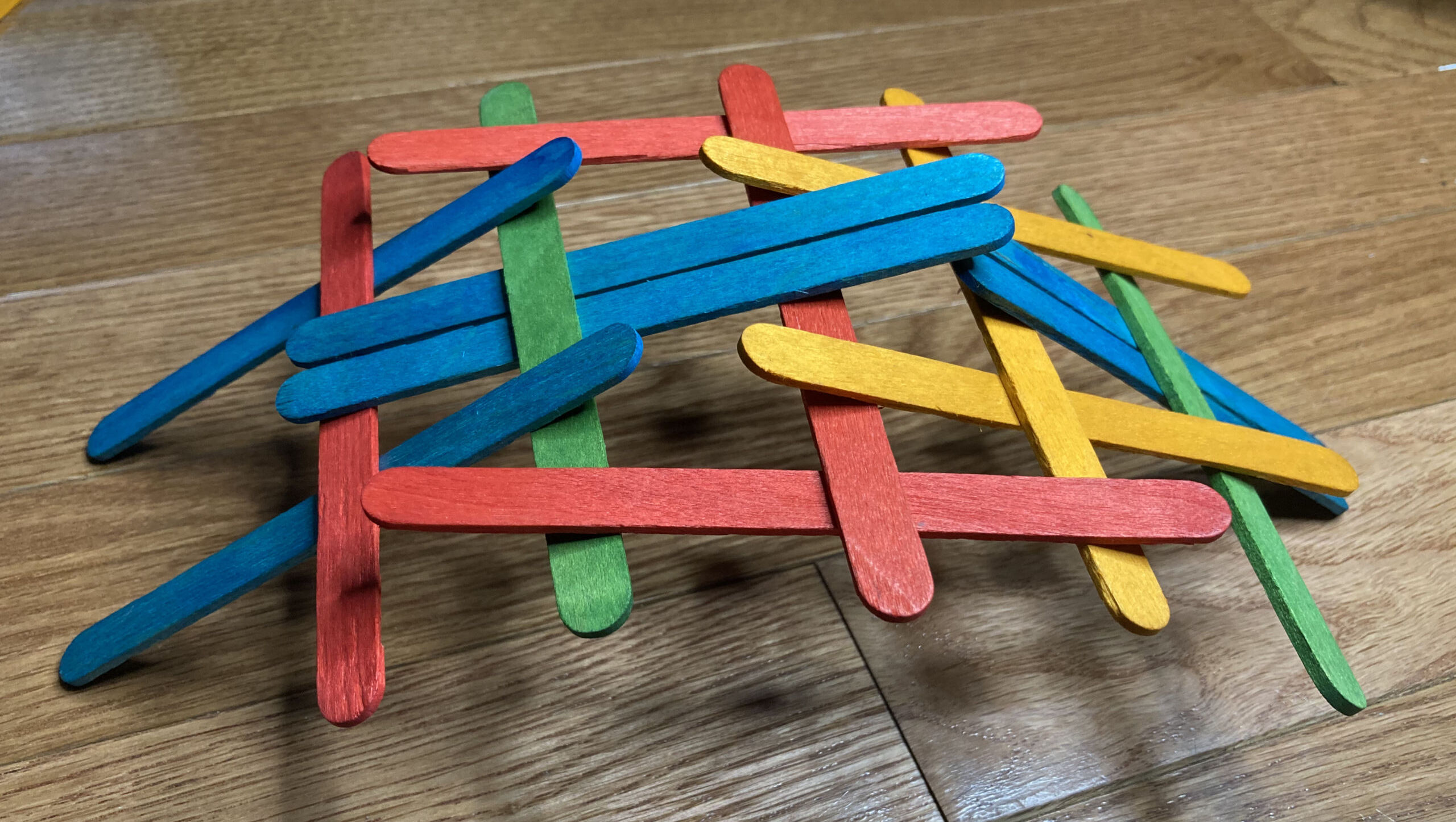



Great activity! And exercise in persistance and experimentation!
Wasn’t he mind-blowingly amazing!
Too bad a lot of his work was commissioned for military use – thus the light weight portable bridge.
Did you come across any info about his being left-handed? I have heard/read he was, and that’s why he wrote backwards. Being a lefty myself, who also writes backwards, I’m a follower of that theory. Thank goodness he wasn’t burned as a witch!
Mind-blowing is right!! I feel like I could do a deep dive on Da Vinci back story and swim for months! I hadn’t gotten to him being left handed, but it wouldn’t surprise me. The theories I saw most in regard to the mirror writing was that it was to keep his paper from smudging – which supports your premise! or as a means to keep his writing private. Whatever the case, it sure is fascinating.